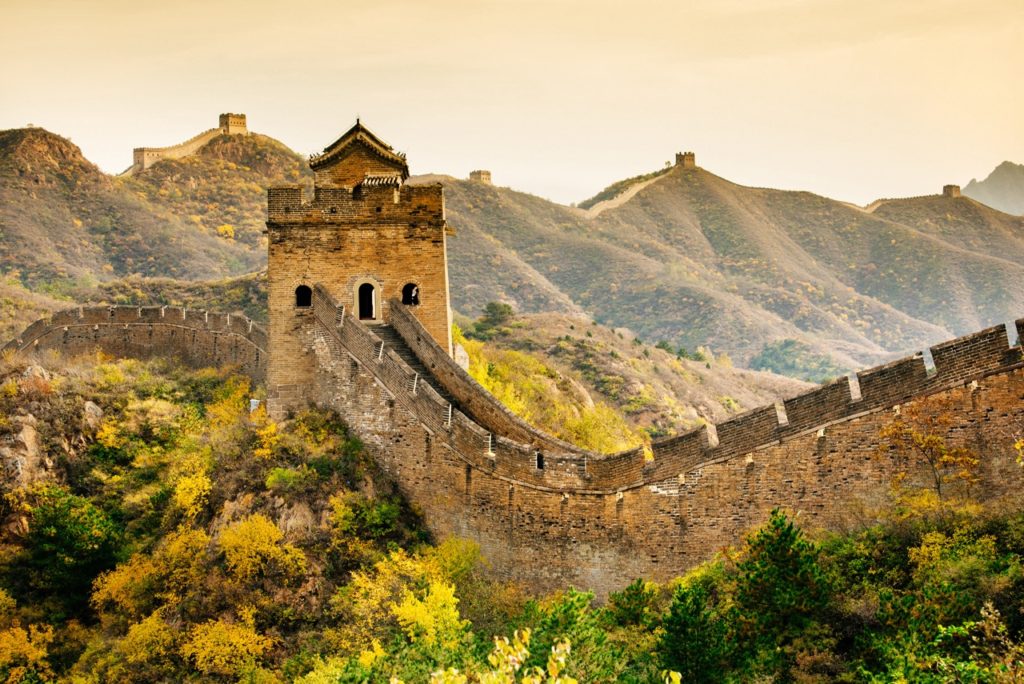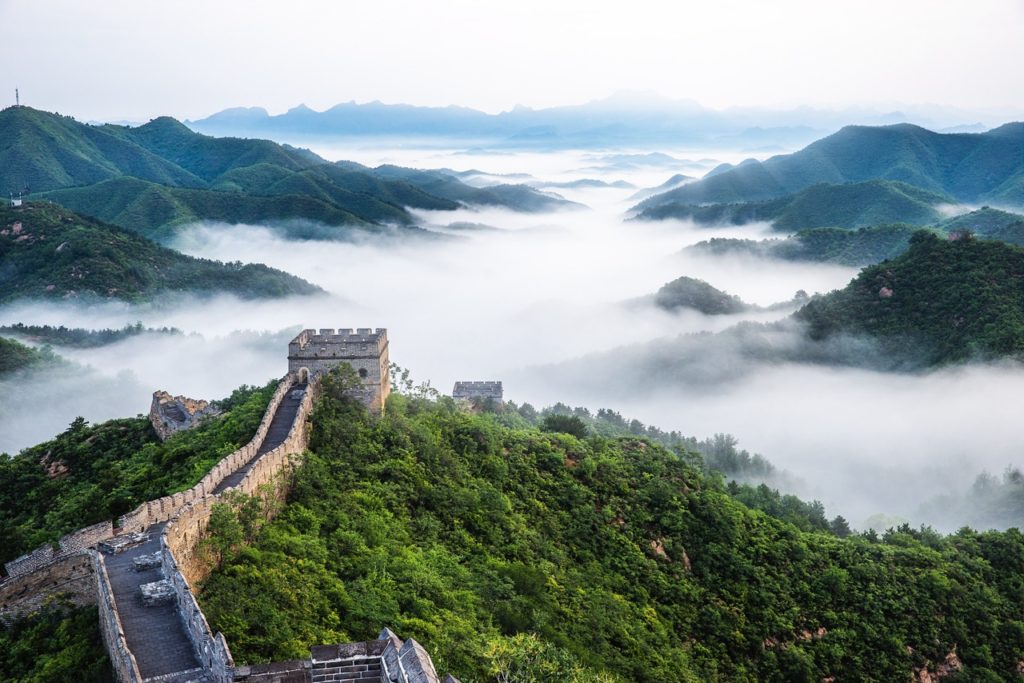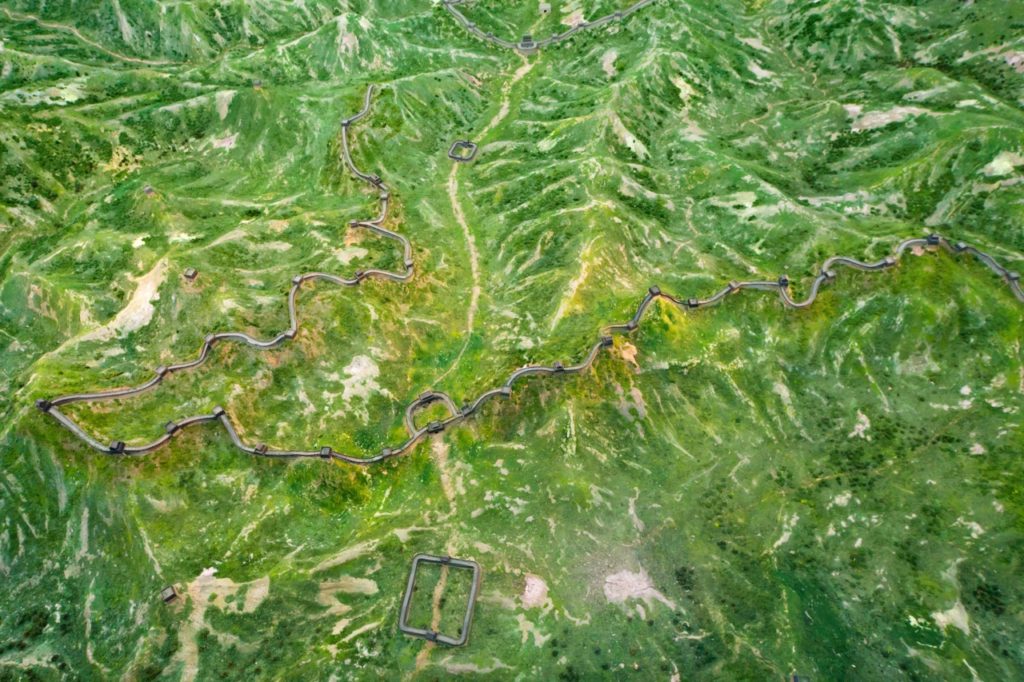Marvelous Masonry: The Great Wall of China
Words: Cass SternWords: Cassandra Stern
The Great Wall of China is an iconic testament to human ingenuity and perseverance. Winding its way through China's rugged terrain, it is one of history's most impressive architectural feats. The wall spans over 13,000 miles, including all its branches and sections. It served as a formidable defense system against invasions from the north and stands today as a symbol of China's rich cultural heritage.
At the heart of this monumental structure lies the mastery of masonry, a craft that has stood the test of time and remains an integral part of the wall's enduring legacy. This article examines the intricacies of the masonry techniques employed in constructing the Great Wall, exploring the materials used, the methods employed, and the enduring legacy of this ancient architectural wonder.

The origins of the Great Wall can be traced back to the 7th century BC, during the Spring and Autumn Period between 771 and 476 BC, and the Warring States Period from 475 to 221 BC. During this time, various states in ancient China built walls and fortifications to protect their territories from rival states and nomadic invasions from the north. Though rudimentary compared to the later Great Wall, these early walls laid the groundwork for the monumental structure.
During the Qin Dynasty, from 221 to 206 BC, the concept of a unified defensive barrier began to take shape. Qin Shi Huang, the first emperor of China, embarked on an ambitious project to connect and fortify existing walls, effectively unifying them into a single structure. This monumental effort laid the foundation for what would later become known as the Great Wall of China.
Following the collapse of the Qin Dynasty, the Han Dynasty, which spanned between 206 BC and 220 AD, continued to expand and reinforce the Great Wall, further solidifying its status as a symbol of imperial power and defense. During this period, significant advancements were made in masonry techniques, enabling builders to construct walls of greater height, breadth, and durability.
One notable innovation during the Han Dynasty was the use of tamped earth and rammed earth techniques in wall construction. By compacting layers of earth and gravel within wooden frames, builders created solid walls that were both sturdy and cost-effective.
While less durable than brick or stone, rammed earth was readily available and provided a cost-effective means of construction. These techniques allowed for the rapid expansion of the Great Wall across vast stretches of territory, effectively extending China's defensive perimeter.

The most recognizable sections of the Great Wall, including those near Beijing, were primarily built or restored during the Ming Dynasty between 1368 and 1644. Faced with the threat of Mongol invasions from the north, the Ming rulers undertook extensive renovations and fortifications of the wall, incorporating advanced masonry techniques and architectural features to enhance its defensive capabilities.
During the Ming Dynasty, brick became the predominant building material for the Great Wall, replacing earlier methods such as tamped earth and rammed earth. These bricks were typically made from clay or a mixture of clay and other additives, such as rice husks or straw, to enhance their strength and durability. Bricks were molded, sun-dried, and fired in kilns before being transported to the construction site.
Bricks were laid using mortar made from a mixture of lime, sand, and water. Skilled bricklayers carefully arranged the bricks in alternating courses, with each course staggered to provide greater stability. Mortar was applied between the bricks to bond them together and fill any gaps, creating a solid barrier against invaders. The use of brick allowed for greater uniformity in construction and for the construction of structurally sound and aesthetically impressive walls featuring decorative elements such as crenellations, watchtowers, and gates, as well as incorporating decorative elements such as arches and battlements.
In areas where suitable clay for brick-making was scarce or where greater durability was required, stone became the material of choice. Quarried from nearby mountains or riverbeds, stones were cut into uniform shapes and sizes and transported to the construction site. The use of stone provided greater stability and resistance to weathering, particularly in sections of the wall exposed to harsh climatic conditions.
Dry stone masonry techniques were employed in sections where stones were used as the primary building material. Skilled craftsmen carefully selected and positioned each stone to interlock with neighboring stones, creating a stable and cohesive structure without the need for mortar. This technique relied on precise fitting and balancing of stones to distribute weight evenly and withstand external forces such as wind and seismic activity.
A critical aspect of wall construction was the laying of foundations to support its immense weight and withstand the pressures exerted by the natural landscape. Foundations were typically dug deep into the ground and filled with compacted earth or rubble to create a stable base. In areas prone to erosion or shifting soil, additional measures such as stone revetments or retaining walls were employed to reinforce the foundation and prevent collapse.
Throughout the length of the wall, watchtowers and fortifications were strategically placed to provide vantage points for surveillance and defense. These structures were built using the same masonry techniques as the wall itself but often incorporated additional features such as arrow slits, battlements, and defensive loopholes. Watchtowers served as defensive outposts and symbolic landmarks, reinforcing the strength and grandeur of the wall.
The decision to use masonry as the primary construction material for the Great Wall of China was influenced by a combination of practical, strategic, and cultural factors. Understanding why ancient Chinese builders chose masonry sheds light on the rationale behind this monumental endeavor.
Masonry offered unparalleled strength and durability, making it ideal for a defensive structure of such magnitude. The Great Wall was not merely a symbolic boundary but a formidable barrier designed to withstand the test of time and repel potential invaders. Stone, in particular, provided exceptional resistance to weathering and external forces, ensuring the wall's longevity.
China's varied landscape presented diverse challenges to wall construction, including steep mountains, rugged terrain, and shifting riverbeds. Masonry techniques could be adapted to suit different environmental conditions, allowing builders to construct walls that followed the contours of the land and effectively defended against incursions from all directions.
The abundance of suitable building materials, such as clay, stone, and earth, made masonry a practical choice for wall construction. Local quarries provided ample stone sources, while clay deposits could be found throughout the region. This ensured a steady supply of materials and reduced the logistical challenges associated with transporting construction materials over long distances.
The ancient Chinese possessed a rich tradition of masonry craftsmanship, honed over centuries of architectural innovation. Skilled artisans and laborers were adept at working with various materials and employing advanced construction techniques, allowing them to tackle complex engineering challenges with precision and efficiency.
Beyond its practical considerations, the choice of masonry for the Great Wall also carried symbolic and cultural significance. The monumental scale and grandeur of the wall served as a testament to the might and prestige of the ruling dynasty, reinforcing notions of strength, unity, and national identity. The meticulous craftsmanship embodied in the wall reflected the cultural values of craftsmanship and perseverance deeply ingrained in Chinese society.
Despite its enduring legacy, the Great Wall of China has faced numerous challenges over the centuries, including natural erosion, human encroachment, and inadequate preservation efforts. In recent decades, concerted conservation efforts have been undertaken to safeguard this cultural treasure for future generations.
Organizations such as the China Great Wall Society and UNESCO have played instrumental roles in promoting awareness of the wall's significance and implementing conservation projects aimed at preserving its structural integrity. These efforts include stabilizing crumbling sections, controlling vegetation growth, and implementing visitor management strategies to minimize the impact of tourism.
 Aerial View of the Great Wall
Aerial View of the Great Wall
Conservation teams are actively engaged in stabilizing crumbling sections of the Great Wall to prevent further deterioration. This involves repairing damaged brickwork, reinforcing weakened foundations, and addressing structural issues caused by erosion and weathering. Techniques such as repointing mortar joints and replacing damaged bricks help ensure the wall's long-term stability.
Vegetation growth poses a significant threat to the integrity of the Great Wall, as roots can penetrate cracks in the masonry, leading to structural damage. Conservation efforts include regular vegetation control measures, such as pruning trees and removing invasive plant species along the wall's length. This helps mitigate vegetation's impact on the structure's stability and preserve its historic fabric.
Sustainable tourism practices are essential for minimizing visitors' impact on the Great Wall. Conservation organizations work closely with local authorities to implement visitor management strategies, such as designated trails, viewing platforms, and visitor centers. Educational programs and signage inform visitors about the importance of preserving the wall and encourage responsible behavior while exploring its historic sites.
Regularly monitoring the Great Wall's condition is crucial for identifying potential threats and promptly addressing maintenance needs. Conservation teams use advanced techniques, such as remote sensing, aerial surveys, and drone photography, to assess the wall's structural integrity and prioritize maintenance efforts. Routine maintenance tasks, such as cleaning debris, repairing signage, and monitoring wildlife activity, help ensure the site's ongoing preservation.
Engaging local communities in conservation efforts is essential for fostering a sense of stewardship and ownership of the Great Wall. Conservation organizations collaborate with local residents, schools, and community groups to raise awareness about the importance of preserving cultural heritage. Community-based initiatives, such as volunteer clean-up events and educational workshops, empower individuals to contribute to the protection and conservation of the Great Wall.
In addition to physical conservation, efforts have been made to document and study the masonry techniques used in the wall's construction. Archaeological excavations, scientific analyses, and digital mapping technologies have provided valuable insights into ancient Chinese builders' craftsmanship and engineering prowess, shedding light on the evolution of masonry techniques over time.
Archaeological research and scientific studies are crucial in advancing our understanding of the Great Wall and informing conservation strategies. Conservation organizations support masonry techniques, historical documentation, and environmental monitoring research projects. By documenting the wall's cultural significance and architectural heritage, researchers help guide conservation efforts and ensure the preservation of this iconic landmark for future generations.
Overall, these conservation efforts reflect a multifaceted approach to preserving the Great Wall of China, encompassing structural maintenance, environmental stewardship, community engagement, and research initiatives. By addressing the wall's complex challenges, conservation organizations strive to safeguard its cultural significance and ensure its enduring legacy for generations to come.
The Great Wall of China is a testament to the power of human ambition and the enduring legacy of ancient civilizations. From its humble beginnings as a series of disparate fortifications to its evolution into a monumental defensive barrier, the wall embodies countless generations' ingenuity, resourcefulness, and craftsmanship.
Central to the construction of the Great Wall is the mastery of masonry, a craft that has withstood the ravages of time and left an indelible mark on the landscape of China. Through the meticulous arrangement of bricks, stones, and earth, ancient builders forged a structure that continues to inspire awe and admiration to this day.
As efforts to preserve and protect the Great Wall for future generations continue, it reminds us of the importance of cultural heritage and the timeless value of craftsmanship. In a world of constant change, the enduring legacy of the Great Wall of China stands as a beacon of resilience and a testament to the enduring spirit of human creativity.